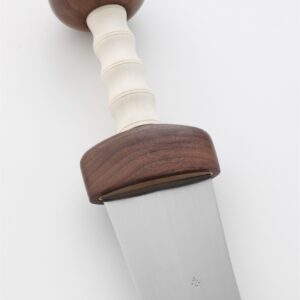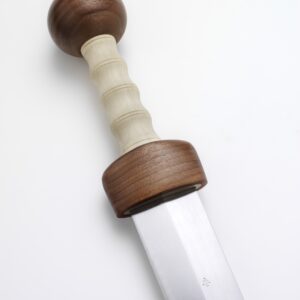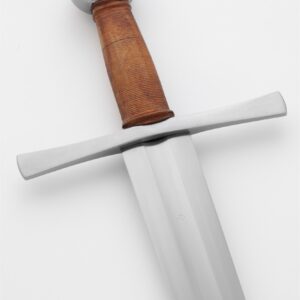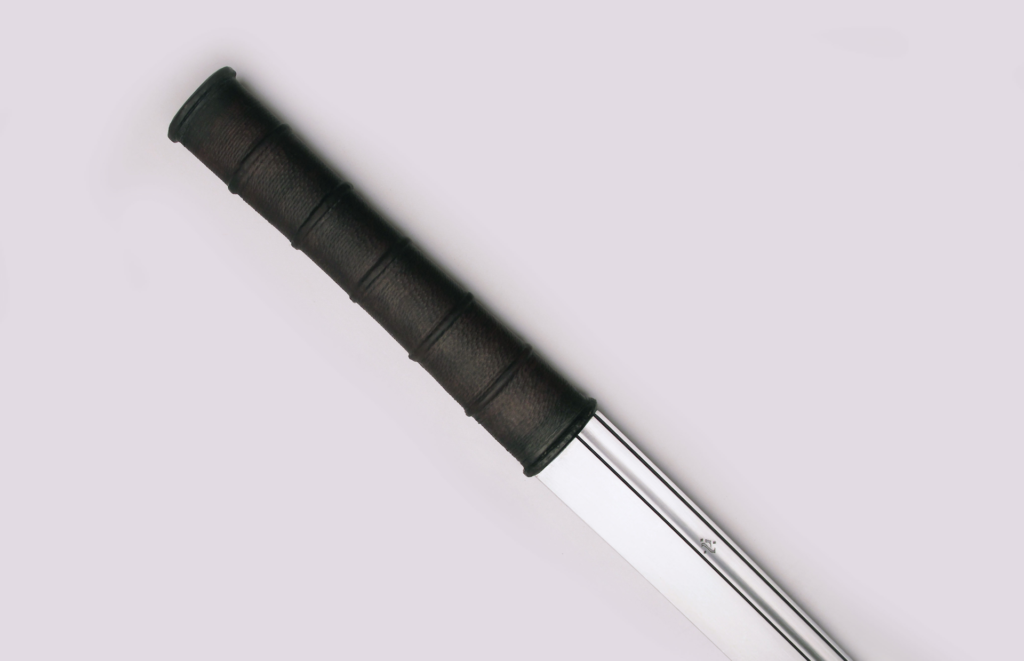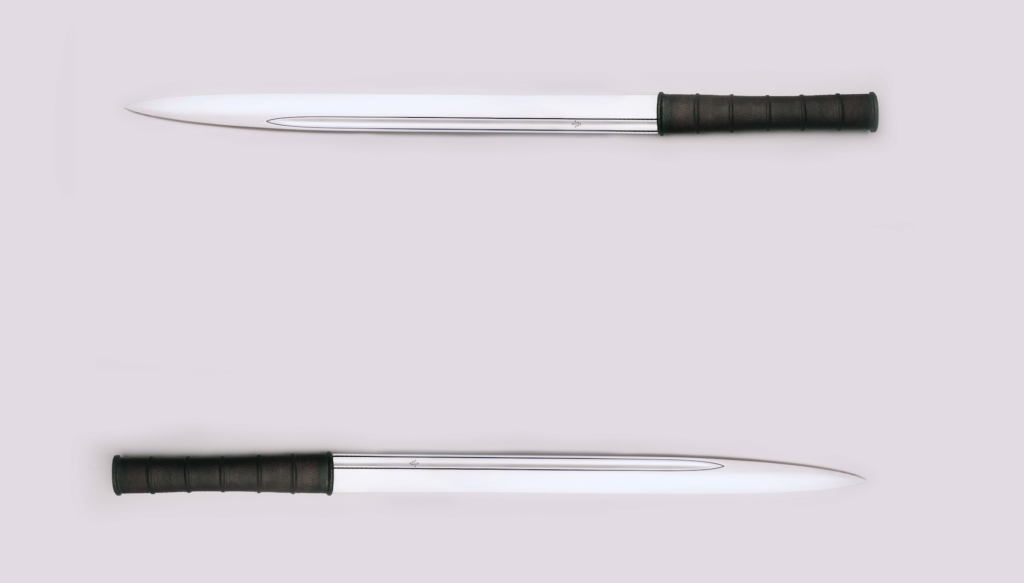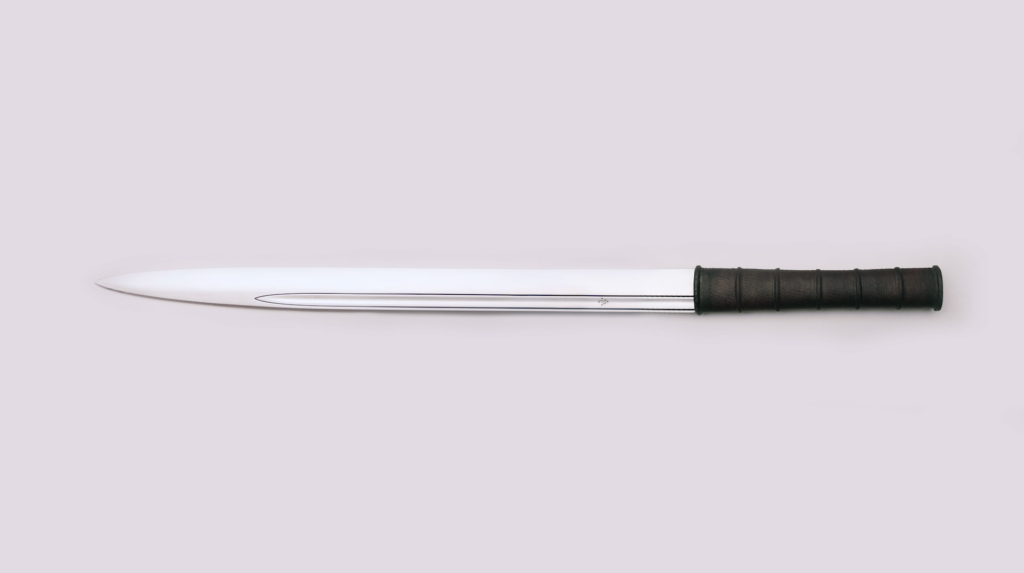(seax)
Long Seax
The Burgundian seax is based on study and documentation of a number of seaxes found in the river Saône in France. By their shape and outline they may be classified as long seaxes and dated to the 8th century.
Though found in Burgundy, France, the type would have been common all over central continental Europe at the time. You will even find seaxes of similar shape and size in Scandinavia.
These seaxes are substantial weapons with wide blades and thick spines. Their weight vary between 600 to more than 700 gram and it is common to see a spine thickness of some 7 – 8 mm, with only a very slight distal taper. With such dimensions it is easy to mistake them for clumsy and cumbersome but their lean cross section and compact size compared to full sized swords. The seax was a very common weapon in the period and were carried by all free men as a sign of their independent status.
Warriors used them as their secondary weapon after the spear or lance instead of or along side with the double edged sword. The seax was a powerful cutting and cleaving weapon for close quarter fighting wielded in one hand and used in conjunction with a large round shield.
Original seaxes typically survive with only the blade more or less intact bu the grip more or less completely gone. The few traces there is of surviving grips are fragmentary, but together with depiction in art we can still get a pretty good idea of their design and construction. The core of the grip was of wood that was snugly fitted over the tang. It was held in place by wedging and glue but no pins or rivets. The tangs were usually blind, ending inside the grip just short of full length. The glues or resins that were available at the time could afford a strong and resilient bond, enough for a reliable construction. We have opted to add two pins to further increase the toughness of the construction, since there is a scarcity of skilled cutlers in the villages of today´s warriors.
From surviving examples we learn that the wood could be covered with a combination of textile and leather. Finds of knives from the period with sheet metal covered grips provides further hints as to the look of the more common weapons. In the sheet metal we can see sections of tightly set lines interrupted by low ridges over the length of the grip. It is as if cord bound leather was depicted in metal work. Thus the construction of the grip of the Burgundian seax, with repeated ridges of cord and a complete cover of leather.
We can also learn about the shape of the grip from surviving examples, that typical have an egg shaped cross section. Towards the blade the grip is fairly thin and then growing to a more full section towards the middle. In silhouette the grip has a very slight waist. The well fitted wood core bound with cord and covered with leather provides a firm non-slip grip. Details like this transforms the simple grip into a subtle and beautiful ting that is as elegant to look at as it is ergonomic in use.
Specifications
Overall length: 30.625″ (77.79 cm)
Blade Length: 21.875″ (55.56 cm)
Blade width (at base): 1.625″ (4.13 cm)
CoB: 5.5″ (13.97 cm)
CoP: 14.5″ (38.83 cm)
Weight: 2 lbs 2.2 oz (970 grams)
